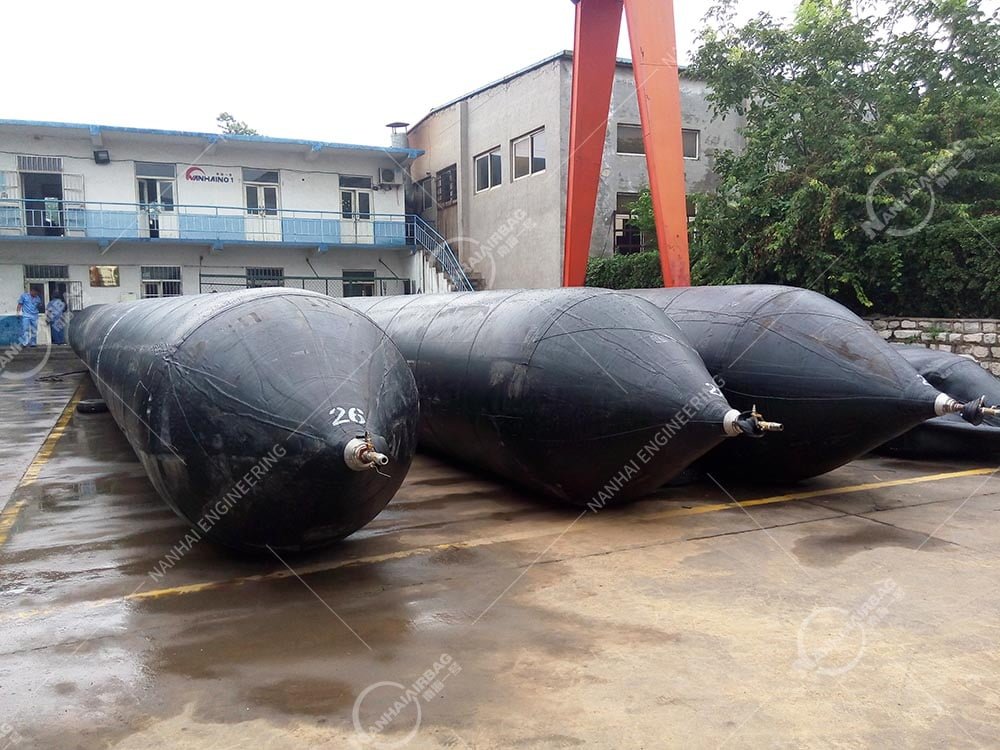How to Choose the Right Marine Salvage Airbags for Your Project
06/17/2025Application of Marine Airbags in Marine Aquaculture
06/18/2025Safety valve for marine airbags
Safety is always the top priority when you’re launching a ship or heavy structure with marine airbags. Airbags enable heavy lifting and smooth, flexible operations — but they’re not without risk. If pressure gets out of control, a catastrophic failure can happen, putting people and equipment in danger. This is why we need a safety valve for marine airbags — a small but crucial component that prevents overpressurization and guarantees operational safety.

Safety Valve for Marine Airbags — What Is It and How Does It Work?
Safety valves for marine airbags are pressure release mechanisms designed to keep internal pressure within a safe range.
When the pressure reaches a certain limit, the valve opens and lets excess air escape, thereby protecting the airbag from overpressurization.
This not only prevents structural damage but also helps keep the workers and nearby equipment safe.
Release Pressure Setting and Standard Ranges
When adding a safety valve to a marine airbag, it’s crucial to set its release pressure appropriately.
Usually, the release pressure is set to 2.5 times the airbag’s guaranteed working pressure.
This setting offers a safety margin of 1.8 — it’s close enough to respond to danger, yet not too restrictive.
Safe Working Pressure, Safe Overload Pressure, and Safe Alert Pressure
To make sure everything operates safely, it’s helpful to identify three pressure ranges for a marine airbag:
Safe Working Pressure — This range falls at or below the standard guaranteed working pressure for the airbag. Loading and operations should remain within this range to avoid overpressurization.
Safe Overload Pressure — During brief moments, the pressure might temporarily reach above the guaranteed pressure — up to twice its rated pressure — without causing damage. This range is called the safe overload pressure.
Safe Alert Pressure — This is the pressure at which the safety valve starts to release excess air. Whenever this pressure is exceeded, the valve opens, and the team should take action to bring pressure back down to a safe range.
Attract Customers to Continue Reading
Installing a pressure release valve is a small but powerful step toward safely launching heavy ships with airbags.
With a properly calibrated safety valve, you can avoid catastrophic failures, protect your crew, prolong the service life of your equipment, and reduce maintenance costs.
If you want to learn more about choosing, installing, or servicing a safety valve for your marine airbags, keep reading — we’re here to guide you through every step.
Related Questions
What pressure should a marine airbag’s safety valve release at?
The safety valve should release pressure at 2.5 times the airbag’s guaranteed working pressure. This setting offers a safety margin of 1.8, ensuring both operational safety and structural stability.
How frequently should I inspect or service my marine airbag’s safety valve?
It’s recommended to inspect and service the safety valve regularly — at least once a year or after heavy usage — to make sure it’s in proper working condition.
Are there different types of safety valves for different sizes of marine airbags?
Yes — safety valves come in various sizes and pressure settings, depending on the dimensions and pressure requirements of your marine airbags.
What are the main materials used in safety valves for marine airbags?
Safety valves are typically made from high-strength metal materials, such as stainless steel or brass, to provide resistance against corrosion and pressure stress.
How does a pressure safety valve prolong the service life of a marine airbag?
A pressure safety valve prevents overpressurization, thereby reducing stress on the airbag and extending its service life. Proper pressure control helps avoid premature wear, damage, or catastrophic failure.
